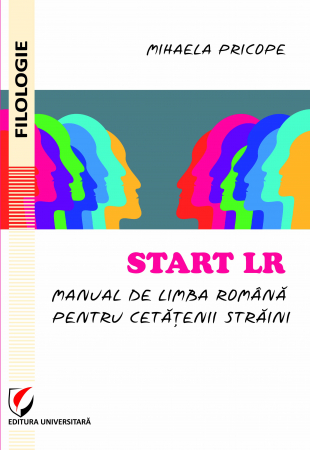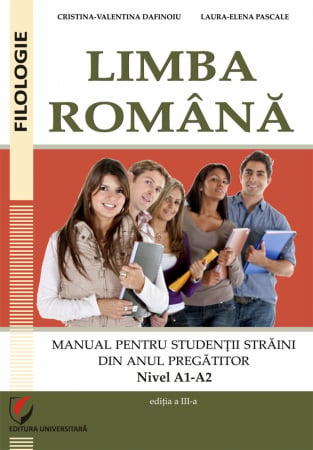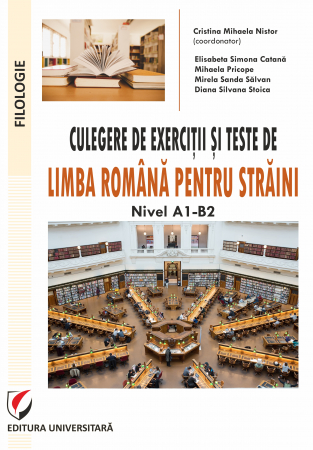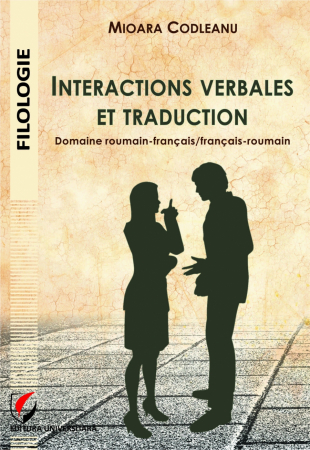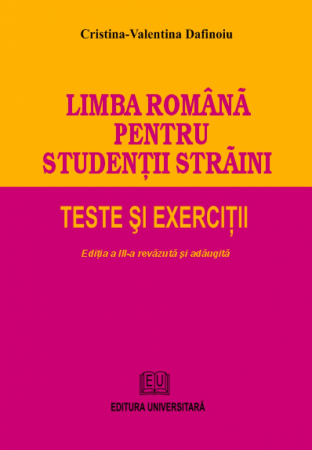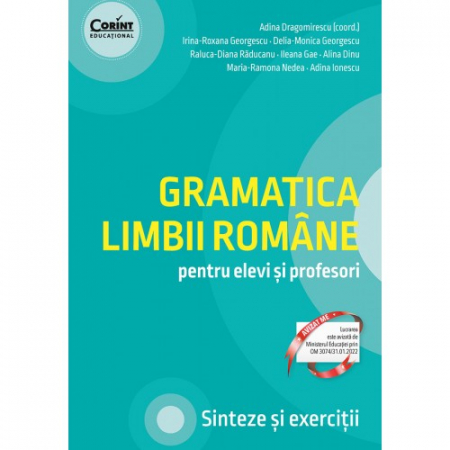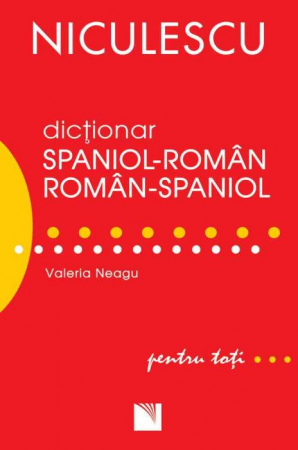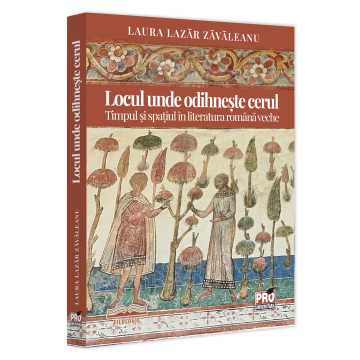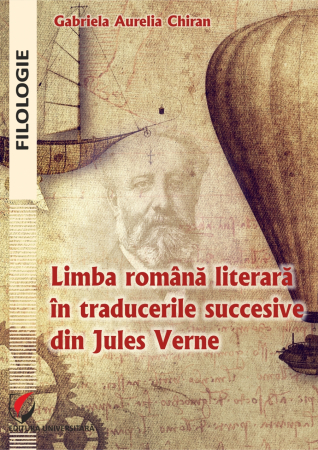Manuscript proposals: [email protected] / 0745 204 115 //// Tracking orders Individuals / Sales: 0745 200 357 / Orders Legal entities: 0721 722 783
ISBN: 978-606-28-0538-8
DOI: 10.5682/9786062805388
Publisher year: 2016
Pages: 250
Publisher: Editura Universitară
Author: Diana Ligia Tudor
Product Code:
9786062805388
Do you need help?
0745 200 357
- Download (1)
- Authors
- Content
- More details
- Reviews (0)
-
PRATIQUE DU VOYAGE ET REPRÉSENTATIONS DE L’ESPACE DANS L’ŒUVRE DE MAXIME DU CAMP
Download
Diana Ligia Tudor
FOREWORD / 7
FOREWORD / 11
INTRODUCTION: Maxime Du Camp, a great little-known author? / 13
CHAPTER 1: TRAVEL PRACTICE / 22
1.1. The experience of self-quest: the journey / 22
1.2. Manly trials and literary self-promotion / 38
1.3. Valued models of travelers. Good and bad "tourists" / 55
1.4. The vision of death / 65
1.5. Means of travel. On accommodation / 82
1.6. Travel Notes / 85
CHAPTER 2: THE TRAVELER AND THE ENCYCLOPEDIC MODEL / 87
2.1. The Archaeological Mission / 91
2.2. Scientific knowledge / 96
2.3. The journey of artistic instruction / 106
2.4. Legends, beliefs, magical practices / 115
2.5. Maxime Du Champ - pioneer of photography / 119
CHAPTER 3: SPACE REPRESENTATIONS / 125
3.1. Ancient buildings and approaches to space / 125
3.2. Other spaces / 132
3.3. Nature and landscapes / 152
3.4. Coordinates of the urban space / 170
CHAPTER 4: IMAGES OF THE OTHER THROUGH TRAVEL / 178
4.1. Practice of travel and gaze of the other / 178
4.2. Typologies and portraits of the other / 185
4.3. Us and customs of the other / 200
CONCLUSIONS / 210
BIBLIOGRAPHY / 213
ADDENDA 1: Bio-bibliographical landmarks / 220
ADDENDA 2: Work and Travel Itineraries / 230
FOREWORD / 11
INTRODUCTION: Maxime Du Camp, a great little-known author? / 13
CHAPTER 1: TRAVEL PRACTICE / 22
1.1. The experience of self-quest: the journey / 22
1.2. Manly trials and literary self-promotion / 38
1.3. Valued models of travelers. Good and bad "tourists" / 55
1.4. The vision of death / 65
1.5. Means of travel. On accommodation / 82
1.6. Travel Notes / 85
CHAPTER 2: THE TRAVELER AND THE ENCYCLOPEDIC MODEL / 87
2.1. The Archaeological Mission / 91
2.2. Scientific knowledge / 96
2.3. The journey of artistic instruction / 106
2.4. Legends, beliefs, magical practices / 115
2.5. Maxime Du Champ - pioneer of photography / 119
CHAPTER 3: SPACE REPRESENTATIONS / 125
3.1. Ancient buildings and approaches to space / 125
3.2. Other spaces / 132
3.3. Nature and landscapes / 152
3.4. Coordinates of the urban space / 170
CHAPTER 4: IMAGES OF THE OTHER THROUGH TRAVEL / 178
4.1. Practice of travel and gaze of the other / 178
4.2. Typologies and portraits of the other / 185
4.3. Us and customs of the other / 200
CONCLUSIONS / 210
BIBLIOGRAPHY / 213
ADDENDA 1: Bio-bibliographical landmarks / 220
ADDENDA 2: Work and Travel Itineraries / 230
The doctoral thesis of Mrs. Diana Ligia Tudor is an informed, solid, clear work, appearing as a result of meritorious efforts of documentation and reflection on a new subject in literary research. Indeed, Maxime Du Camp's work, despite its vastness and interest, has only been sporadically studied. The author did not benefit from models that could have helped her in her approach and did not have a direct bibliography, which would make her task easier, proving to be able to overcome this major difficulty and to elaborate a convincing thesis.
Maxime Du Camp's work is diverse and rich. According to her subject, the author of the paper approaches the part related to travel stories, trying to detach a specific, in relation to other writings of the same invoice, from the 19th century. He knows well other such illustrious examples, as well as the specialized bibliography of the field: theories on travel as cultural practice, theories of landscape, psychology and poetics of space, history of Orientalism, the issue of otherness. Using them rigorously, Diana Ligia Tudor approaches through their prism the type of travel and storytelling typical of Maxime Du Camp. I found interesting the considerations regarding the initiation course or the virilization through the qualifying test of the trip. In addition, the author does not intelligently explain the common denominator, the deep significance of these different models: "We can say that all these models of travelers have in common heroism, endurance, courage, constancy, manhood, which whether it is scientific, encyclopedic or religious. ''
Chapter 2 brings to the fore the essential elements of the journey for Maxime Du Camp. He conceived it as a mission, in the highest sense of the word; being mandated by the Academy of Inscriptions or by the Orientalist Society, of which he was a member, with a task that seemed destined for the good of all mankind, Maxime Du Camp devoted his body and soul to its fulfillment. He was, of course, competent, and the mission was important, but neither was as great as he conceived.
Believing himself to be a true descendant of Champollion (with whom he had only some kinship), believing himself a true Orientalist, while his knowledge in the field was rather modest, believing himself competent in an infinity of fields, from zoology to archeology, from architecture to geology, from heliography to botany, Maxime Du Camp considers himself authorized to research and pronounce in an infinity of fields. He seems to be in the same category as Bouvard and Pecuchet, Flaubert's two characters.
This attitude can be seen as a myth that reached its peak in the first half of the nineteenth century, that of encyclopedism and all-knowing and all-powerful science. Of course, there is the conviction that these mythical qualities are manifested even more fully on the Orient, the stake of knowledge being completed in this case with the stake of political power and territorial appropriation. However, the examples given by the author are revealing: "infinite calculations, figures and measurements", and "the author wants to verify the assertion that the sounds produced by the male swan at the time of death are mi / fa, and the female mi / fa re''; the author would like to copy the millions of hieroglyphs that cover Egyptian monuments.
The chapter on "Representations of space" also brings interesting elements. The author abstracts well from the nuance of the stories what seems to be a real technique used by Maxime Du Camp to approximate her space. It is about a present-past dialectic: ,, The description of the Sphinx is significant in this regard: it is based on two types of contrasts: the vertical (present-past) - the paradigm of timelessness (greatness and 'immobility of the Sphinx) as opposed to that of the ephemeral of the human condition, and also the contrast on the horizontal (near-far)' '. The spatial configurations used by the author, the types of heterotopic spaces or the scopic procedures (panoramic view, image construction, etc.) are also very well highlighted. It should also be emphasized in the pages devoted to the representations of nature and landscapes, the indigence of the descriptions, in relation to the similar ones, of the known authors. Here, for example, how about a journey appreciated as being of unparalleled beauty, Maxime Du Camp only lists the species of trees, limiting himself to adding that they were "of all forms": in many writings of the author lacks the concretization of these forms, missing, with one exception, the colors, the composition of the painting, the impressions. It is obvious that the author prefers the epistemic approach to the aesthetic one, the scholarly inventory instead of the artistic and sensitive perception. Making the appropriate exceptions, I think that the observation regarding the representations of cities should be generalized: "Du Camp sometimes has the cinematic gaze of an objective camera that only records and inventories in a dry tone objects, movements, buildings, humans" .
In the chapter on the images of the ethnic groups visited, the author correctly observes the attitude of an ethnologist, who studies the Orient with meticulousness and cold objectivity, just as he studied monuments and animal species. Maxime Du Camp does not see the Other as irreducible in his mysterious and admirable otherness. He believes that the Other is perfectly knowable and that it is only a matter of time or effort to make him transparent and reduce him, and the astonishment at the cultural difference seems to him rather a naivety. How can one who proclaims himself cosmopolitan be sensitive to otherness?
The paper arouses interest and provides pertinent answers, on which the author really reflected. It is clear, coherent, correctly written in French and well structured. Diana Tudor deepened very well the essential bibliography of the field and the comprehensive work of the studied author, managing to elaborate a solid research.
Prof. Dr. Dolores Tom
Maxime Du Camp's work is diverse and rich. According to her subject, the author of the paper approaches the part related to travel stories, trying to detach a specific, in relation to other writings of the same invoice, from the 19th century. He knows well other such illustrious examples, as well as the specialized bibliography of the field: theories on travel as cultural practice, theories of landscape, psychology and poetics of space, history of Orientalism, the issue of otherness. Using them rigorously, Diana Ligia Tudor approaches through their prism the type of travel and storytelling typical of Maxime Du Camp. I found interesting the considerations regarding the initiation course or the virilization through the qualifying test of the trip. In addition, the author does not intelligently explain the common denominator, the deep significance of these different models: "We can say that all these models of travelers have in common heroism, endurance, courage, constancy, manhood, which whether it is scientific, encyclopedic or religious. ''
Chapter 2 brings to the fore the essential elements of the journey for Maxime Du Camp. He conceived it as a mission, in the highest sense of the word; being mandated by the Academy of Inscriptions or by the Orientalist Society, of which he was a member, with a task that seemed destined for the good of all mankind, Maxime Du Camp devoted his body and soul to its fulfillment. He was, of course, competent, and the mission was important, but neither was as great as he conceived.
Believing himself to be a true descendant of Champollion (with whom he had only some kinship), believing himself a true Orientalist, while his knowledge in the field was rather modest, believing himself competent in an infinity of fields, from zoology to archeology, from architecture to geology, from heliography to botany, Maxime Du Camp considers himself authorized to research and pronounce in an infinity of fields. He seems to be in the same category as Bouvard and Pecuchet, Flaubert's two characters.
This attitude can be seen as a myth that reached its peak in the first half of the nineteenth century, that of encyclopedism and all-knowing and all-powerful science. Of course, there is the conviction that these mythical qualities are manifested even more fully on the Orient, the stake of knowledge being completed in this case with the stake of political power and territorial appropriation. However, the examples given by the author are revealing: "infinite calculations, figures and measurements", and "the author wants to verify the assertion that the sounds produced by the male swan at the time of death are mi / fa, and the female mi / fa re''; the author would like to copy the millions of hieroglyphs that cover Egyptian monuments.
The chapter on "Representations of space" also brings interesting elements. The author abstracts well from the nuance of the stories what seems to be a real technique used by Maxime Du Camp to approximate her space. It is about a present-past dialectic: ,, The description of the Sphinx is significant in this regard: it is based on two types of contrasts: the vertical (present-past) - the paradigm of timelessness (greatness and 'immobility of the Sphinx) as opposed to that of the ephemeral of the human condition, and also the contrast on the horizontal (near-far)' '. The spatial configurations used by the author, the types of heterotopic spaces or the scopic procedures (panoramic view, image construction, etc.) are also very well highlighted. It should also be emphasized in the pages devoted to the representations of nature and landscapes, the indigence of the descriptions, in relation to the similar ones, of the known authors. Here, for example, how about a journey appreciated as being of unparalleled beauty, Maxime Du Camp only lists the species of trees, limiting himself to adding that they were "of all forms": in many writings of the author lacks the concretization of these forms, missing, with one exception, the colors, the composition of the painting, the impressions. It is obvious that the author prefers the epistemic approach to the aesthetic one, the scholarly inventory instead of the artistic and sensitive perception. Making the appropriate exceptions, I think that the observation regarding the representations of cities should be generalized: "Du Camp sometimes has the cinematic gaze of an objective camera that only records and inventories in a dry tone objects, movements, buildings, humans" .
In the chapter on the images of the ethnic groups visited, the author correctly observes the attitude of an ethnologist, who studies the Orient with meticulousness and cold objectivity, just as he studied monuments and animal species. Maxime Du Camp does not see the Other as irreducible in his mysterious and admirable otherness. He believes that the Other is perfectly knowable and that it is only a matter of time or effort to make him transparent and reduce him, and the astonishment at the cultural difference seems to him rather a naivety. How can one who proclaims himself cosmopolitan be sensitive to otherness?
The paper arouses interest and provides pertinent answers, on which the author really reflected. It is clear, coherent, correctly written in French and well structured. Diana Tudor deepened very well the essential bibliography of the field and the comprehensive work of the studied author, managing to elaborate a solid research.
Prof. Dr. Dolores Tom
If you want to express your opinion about this product you can add a review.
write a review

6359.png)
![Travel Practice and Representations of Space in the Work of Maxime du Camp [1] Travel Practice and Representations of Space in the Work of Maxime du Camp [1]](https://gomagcdn.ro/domains/editurauniversitara.ro/files/product/large/pratique-du-voyage-et-reprsentations-de-l-espace-dans-l-uvre-de-maxime-du-camp-483-39494.jpg)
